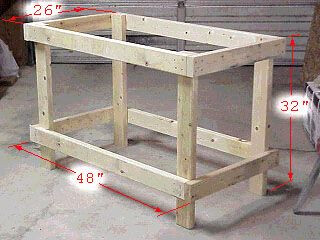“`html
How to Effectively Make a Table for Your 2025 Projects: A Smart Guide to Organization
Understanding the Importance of Project Organization
In today’s competitive environment, effective organization is crucial for the success of any project. By utilizing tables, you can ensure clarity and focus. A well-structured table serves not only as a visual aid but also as a central reference point for project milestones, task assignments, deadlines, and resource allocations. This method allows project teams to maintain alignment and improves overall productivity. Furthermore, using organized tables paves the way for better communication, so everyone stays on the same page, especially when managing multiple components of complex projects.
The Benefits of Using Tables in Project Management
Tables provide a myriad of benefits in project management. Primarily, they enhance visibility into project details, making it easier to track progress. By breaking down large amounts of information into concise rows and columns, team members can quickly interpret essential data. For instance, planning a marketing campaign in 2025 might include columns for tasks such as \”Content Creation,\” \”Social Media Posting,\” and \”Performance Analysis.\” More so, this method mitigates the risk of overlooking critical tasks by offering an organized placement of each element, thus optimizing workflow efficiency.
Key Elements That Should be Included in Your Project Tables
Creating an effective project table requires including several key elements. Begin with headings such as Task, Responsible Party, Start Date, End Date, and Status. These headings allow for clear categorization. Each row is dedicated to a specific task which can both clarify and streamline communications, ensuring responsible parties understand their roles. Additionally, color coding statuses, such as green for completed tasks and yellow for in-progress tasks, can make a significant visual impact and facilitate faster decision-making. Furthermore, parameterizing elements such as priority level will also assist teams in understanding what needs immediate attention.
Effective Table Creation Techniques
When it comes to creating tables for your 2025 projects, utilizing effective techniques can enhance usability and accessibility. Start by choosing a software platform that offers user-friendly table creation tools. Microsoft Excel, Google Sheets, or project management applications like Trello and Airtable can be extremely helpful. Additionally, ensure you format your table properly, maintaining consistent font, borders, and coloration for better readability. Such design practices naturally draw the eye to critical information and create a more professional appearance, encouraging team members to interact with the table actively.
Step-by-Step Guide for Crafting Your Table
Creating a project table involves several straightforward steps. Start with an outline of your project objectives and major tasks. Next, select your preferred software and begin building your table structure. Input relevant headings and customize your table’s aesthetics by setting up cell colors or using borders effectively. For advanced users, utilizing formulas can automate certain calculations or data arrangements to reduce manual entry—this increases both speed and accuracy in your project tracking process. Lastly, share your completed table with team members and be open to feedback for continuous improvement.
Common Mistakes to Avoid When Creating Tables
Despite the simplicity of table creation, there are common pitfalls to avoid. One significant issue is overcrowding your table with too much detail. Keep your content succinct; extraneous information can overwhelm users and reduce overall efficiency. Additionally, ensure that all team members know how to access and utilize the table, as a lack of understanding can result in underutilization. Lastly, remember to regularly update your table; stagnant records can quickly become disputes and lead to confusion among your team members. Consistent monitoring ensures your data’s relevance and accuracy.
Incorporating Technology into Your Project Management
As we move towards 2025, integrating technology into your project management process becomes indispensable. Various applications not only help create tables but also allow teams to synchronize in real-time. Platforms like Asana and Jira enable easy file sharing, instant updates, and collaborative features that enhance productivity. Additionally, incorporating powerful analytical tools can provide insights into project performance, making it easier to adjust schedules as necessary. Technology thus revolutionizes traditional project management methodologies—making it easier for teams to troubleshoot bottlenecks and adapt swiftly to new developments.
Tools for Project Management You Should Consider
There is a broad array of tools available for effective project management in 2025. As mentioned, tools like Trello produce visually intuitive boards that efficiently organize tasks. Another standout, Monday.com, combines project management with resource allocation effectively, providing detailed timelines and workload assessments. If data analysis is crucial to your projects, consider using tools like Microsoft Power BI or Tableau. These tools will enable you to transform raw data into insightful visual representations and foster a profound understanding of your project statuses, leading to more informed decisions.
Best Practices for Using Technology Effectively
Successfully leveraging technology for your project management tables involves adhering to best practices. Firstly, ensure regular training sessions on any new software introduced, enabling team members to utilize features fully. Secondly, set up reminders for vital deadlines through these tools to maintain high accountability. Additionally, make use of integrations offered by platforms to pull in data from various streams into your project table. Finally, regularly solicit feedback from your team about the technology being used; this will help evaluate if further training or tool upgrades are needed for better functionality.
Final Thoughts on Effective Project Management for 2025
Crafting an effective table for your 2025 projects is not merely an act of organization; it is a strategic approach to enhance teamwork and oversee progress meticulously. By understanding the importance of these tables, harnessing the right tools, and incorporating effective practices, you will set your project management on the path to success. Always remember that flexibility is key in project management; being able to quickly adjust your plans as challenges arise is what will ultimately lead you to reach your project’s objectives. Therefore, continually refine your approach so you can keep your projects organized and effective.
FAQ
1. What software should I use to create project tables effectively?
Popular software tools include Microsoft Excel and Google Sheets, which provide robust features for table creation. Additionally, project management tools like Trello and Asana offer integrated table functionalities that cater to collaboration.
2. How often should project tables be updated?
It’s advisable to update your tables regularly, ideally weekly or bi-weekly, to reflect progress. Frequent updates prevent tasks from falling behind and help maintain current data throughout your project lifespan.
3. Can tables help improve team communication?
Absolutely! A structured table serves as a collective reference point for all team members, enhancing transparency. When everyone can access the same information, it leads to more informed discussions and efficient teamwork.
4. Should I include all project details in the table?
No, try to keep your tables streamlined to avoid overcrowding them with unnecessary information. Include only essential details that are relevant to the team’s understanding and success of the project.
5. How can I ensure everyone knows how to use the tables?
Consider conducting training sessions to familiarize your team with the table formats and associated tools. Also, providing clear instructions or a guide can enhance user experience and promote effective usage.


“`
